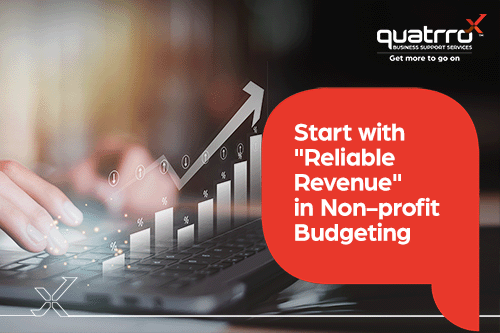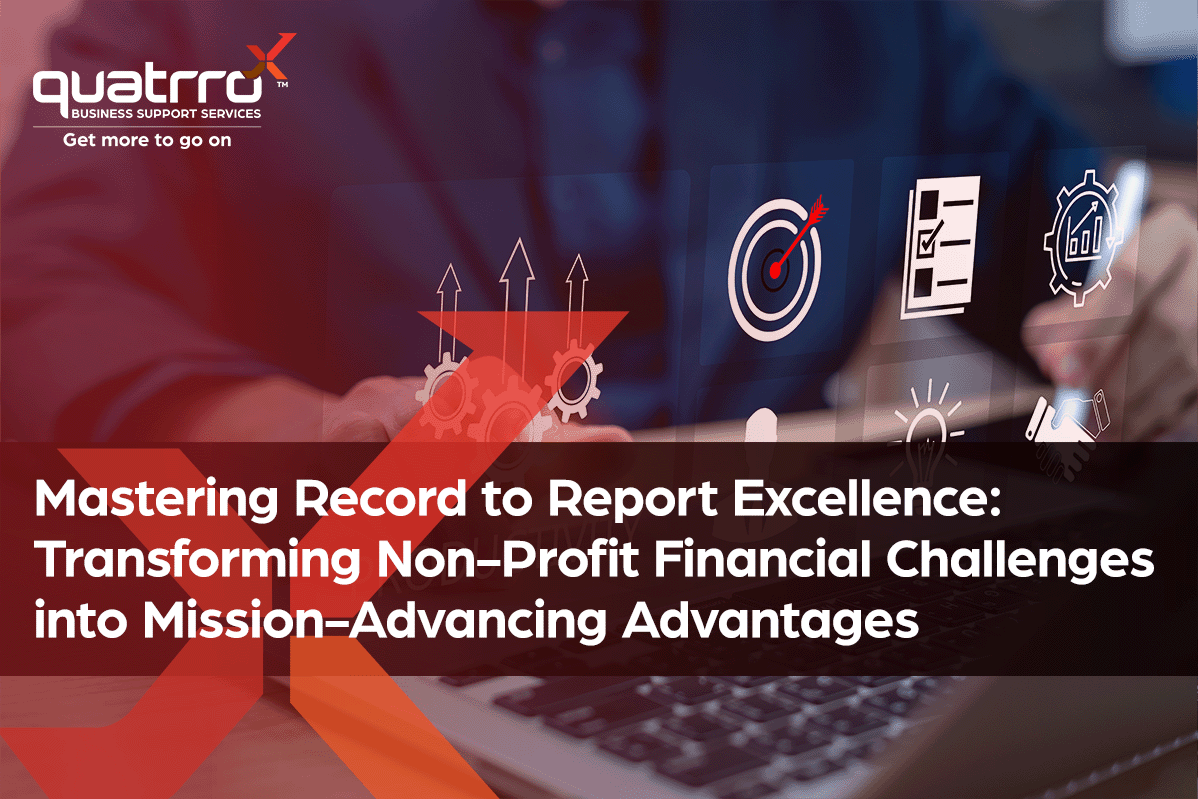Blog Details
From Annual Planning to Continuous Optimization: How Rolling Forecasts Can Drive Growth
January 7, 2025

Traditional budgeting is holding back many mid-market organizations. Relying on annual budgets creates an overdependence on historical data, leaving businesses vulnerable to changing market conditions. Without incorporating current, relevant data into their forecasts, organizations risk significant gaps between projections and reality.
To overcome the inefficiencies of traditional budgeting, top-performing finance functions in the mid-market have adopted rolling forecasts. These forecasts are regularly updated based on key business drivers, providing a critical advantage in agility and responsiveness to market changes.
In this installment of our series 6 Pillars of Top Performing Finance Functions, we’ll explore how mid-market companies can learn from top performers and effectively integrate rolling forecasts into their financial planning processes.
Limitations of Static Annual Budgets
The static nature of an annual budget is its greatest limitation. Changing circumstances can quickly render a budget obsolete, often just weeks or months after approval. When market conditions shift unexpectedly, companies find themselves locked into financial plans that no longer reflect current realities. Developing an annual budget is time-intensive, requiring significant resources, only for the plan to become frustratingly irrelevant soon after.
Traditional annual budgets rely heavily on historical data and fixed assumptions. Without the flexibility to adapt to real-time information, companies risk making decisions based on outdated insights. This rigidity hampers their ability to respond swiftly to emerging opportunities or threats. Additionally, fixed budgets can create silos between finance and other departments, as each operates within strict, sometimes misaligned, parameters.
Annual planning also tends to foster short-term thinking. Departments become focused on meeting fixed annual targets, often at the expense of long-term strategic goals. This narrow focus can undermine broader initiatives aimed at sustaining long-term growth and innovation.
Moreover, annual budgets often encourage “use it or lose it” spending, where departments rush to exhaust their allocated funds before the year-end. This behavior leads to inefficient financial management, with underinvestment during the early months stalling growth, and excessive, potentially wasteful, spending at year-end
How Rolling Forecasts Work
Rolling forecasts have become the new standard for top performers. Enabled by technology, rolling forecasts offer organizations a more modern approach to financial planning.
A rolling forecast updates every period for a set number of future periods, typically covering the next 12 or 18 months. For example, if the forecast updates monthly, a new month is added at the end of the forecast as the current month concludes, maintaining a consistent forecast horizon. Rolling forecasts can also be designed to update continuously, triggered by recent data and shifting market conditions. This approach ensures that leadership always has accurate, up-to-date insights into the company’s financial position, enabling more informed and agile decision-making.
One key advantage of a rolling forecast is that it can be adapted to your organization through driver-based inputs. This means that the forecast will focus on key business drivers at your organization, such as sales volume, pricing strategies or market trends.
Rolling forecasts can also integrate performance triggers. These are predefined conditions or thresholds that, when met, initiate a particular action or prompt a reevaluation of the forecast. For example, if revenue drops below a certain level or expenses exceed a specific limit, the performance trigger activates an immediate review. This mechanism ensures that forecasts stay relevant and that the organization adapts quickly.
Benefits of Rolling Forecasts for CFOs
Faster Decision-Making
Accessing up-to-date financial data accelerates decision-making. CFOs can identify trends and patterns as they develop, instead of waiting for periodic budget reviews. This improves organizational agility in investments, cost management and strategic initiatives.
Faster decision-making reduces the lag between recognizing an issue and remedial action. For example, if sales projections decrease, CFOs can immediately communicate with other departments to plan and initiate corrective actions. This minimizes negative impacts on profitability and cash flow. It also improves the company’s ability to outpace competitors.
Better Alignment with Market Changes
Rolling forecasts align financial planning with current market conditions. By incorporating the latest economic indicators, industry trends and customer behaviors, CFOs can ensure that financial plans reflect reality. When market conditions improve, rolling forecasts allow companies to scale up operations confidently. If the market deteriorates, they can scale down or adjust strategies accordingly.
Increased Accuracy in Financial Planning
Regular updates improve the accuracy of financial projections. Traditional budgets rely on assumptions made months in advance. Rolling forecasts use recent data, actively reducing the gap between projections and performance. This leads to better resource allocation and financial control. CFOs can refine their rolling forecast models by analyzing variances between forecasts and results. This can improve forecasting techniques even more over time.
Stronger Collaboration Across Departments
Rolling forecasts encourage ongoing communication between finance and other departments. These regular updates make financial teamseven more relevant to the overall business. Decision-making in response to updated forecasts will require input from sales, marketing, operations, HR and other functions. This collaboration breaks down silos in the organization.
By involving various departments in this process, CFOs can gather diverse perspectives. This input enriches the quality of financial planning and ensures that departmental plans align with overall strategy. Improved collaboration enhances accountability and fosters a culture of shared responsibility.
Risk Management and Scenario Planning
Rolling forecasts support proactive risk management. CFOs can use them to identify potential risks early and respond swiftly. By analyzing different possible scenarios, finance departments can assess possible impacts on financial outcomes. CFOs can develop better contingency plans and mitigate risks more effectively.
Scenario planning enhances strategic thinking. CFOs can model best-case, worst-case and most likely scenarios. This informs decision-making and helps the organization prepare for uncertainties.
Resource Optimization
Dynamic forecasting improves the effectiveness of the organization’s resource allocation. As financial projections change, CFOs can adjust to align with current priorities, ensuring the highest potential return.
This approach helps companies minimize waste, allowing them to capitalize on growth opportunities while curbing expenditures in underperforming areas. By doing so, overall financial performance improves, and finance departments can play a more strategic role in shaping and achieving the company’s long-term objectives.
Implementing Rolling Forecasts at Your Organization
While the benefits of rolling forecasts are clear, implementing them company-wide can face some roadblocks. As a CFO, you can guide the transition to a rolling forecast model by focusing on a few key steps.
Define Clear Objectives
Begin by listing the reasons for moving the organization to rolling forecasts. Strong arguments that highlight the benefits to the organization will help you get buy-in from other leadership. Engage stakeholders early in the process. Involve department heads and key personnel in planning and implementation. Seek their input and address their concerns.
Employees and managers may resist the shift. This resistance often stems from comfort with familiar processes and fear of the unknown. People may worry about increased workload or lack confidence in new methods. Leadership can overcome this by clearly communicating how this change will benefit workload and effectiveness.
Focus on setting objectives. Clear objectives help measure success and ensure that everyone involved understands the value of the change.
Determine the Forecast Horizon and Update Frequency
Decide on the appropriate time frame for your rolling forecast. Common horizons include 12, 18 or 24 months. Next, choose an update frequency that best suits your business dynamics, whether that’s weekly, monthly or quarterly. Regular updates keep the forecast relevant and allow for timely adjustments.
Identify Key Business Drivers
Focus on the variables that significantly impact your company’s performance. These are the relevant cost drivers specific to your operations and strategic objectives. By building forecasts around these drivers, you increase the relevance and accuracy of the forecast.
Simplify Data at the Corporate Level
Aim to reduce the complexity of data inputs at the corporate level. Fewer data records streamline the forecasting process and make it more manageable. Concentrate on high-level metrics that provide meaningful insights without overwhelming detail.
Rolling forecasts rely on accurate and timely data. Poor data quality or fragmented systems can undermine the process. To address data quality issues, CFOs should assess existing data sources in order to identify gaps or inconsistencies in the information used for forecasting. Implement data governance policies to ensure accuracy and consistency across departments.
The organization may also need to consider investing in technology that supports data integration. It is best to leverage systems that can consolidate data from various sources into a unified platform. Finally, CFO’s should establish procedures for regular data validation and implement checks and balances to detect and correct inaccuracies promptly.
Ensure Consistency Across the Organization
It is important to establish a consistent vision for the forecasting process across all levels, departments and regions. Consistency in methodologies, assumptions and data definitions ensures that forecasts are comparable and can be aggregated effectively.
Integrate Budgeting with Rolling Forecasts
If your organization still requires an annual budget, consider making it a snapshot of the rolling forecast and the first year of the business plan. This reduces duplication of effort and keeps the budget aligned with the most recent projections. It also provides flexibility to adjust plans as new information emerges.
Use Specialized Technology
CFO’s should also consider investing in forecasting tools and software that support rolling forecasts if their current technology stack does not support the function. The right technology can automate data collection, enable real-time updates and facilitate collaboration. Additionally, advanced analytics and reporting capabilities can make the system more efficient and insightful for leaders across the organization.
Establish Performance Triggers
You should incorporate performance triggers into your forecasts. These are predefined conditions or thresholds that prompt a review or adjustment when met. Performance triggers help the organization respond quickly to significant changes, ensuring that forecasts remain relevant and actionable.
Train and Engage Your Team
It is extremely important to ensure you provide training to those involved in the forecasting process. Ensure that your team understands the new methodologies and the importance of their contributions. You will want to engage them in discussions about the process and encourage feedback. A well-informed and involved team enhances department effectiveness.
Consider a Pilot Program
If you are encountering resistance to the change, you could consider implementing rolling forecasts in a specific department or business unit as a pilot. This allows you to test the process, make adjustments and clearly demonstrate the benefits. A successful pilot can build confidence and support for broader adoption across the organization.
Communicate Benefits To Stakeholders
Effectively communicating the advantages of rolling forecasts to all stakeholders will be a key to successful implementation in any organization. When you highlight how this approach improves agility, supports better decision-making and aligns resources with strategic goals, the stakeholders across the organization will see the value of supporting the change. Clear communication is always key to reducing resistance to change.
Monitor and Refine the Process
After implementation, regularly review the forecasting process to identify areas for improvement. You will want to monitor key performance indicators and focus on gap closure. It is also important to solicit feedback from users to understand challenges and opportunities so needed adjustments can be made to eliminate those.
Final Thoughts
Transitioning from a static annual budget to a rolling forecast can significantly improve a company’s financial agility and strategic alignment. As mid-market competition mounts, outdated assumptions and rigid plans hamper growth and responsiveness.
By implementing rolling forecasts, mid-market CFOs can anticipate challenges and seize opportunities more effectively. They can also increase the real effect of the finance department on the organization’s bottom line, and help move finance into a more strategic role at their company.
If anything in this article piqued your interest as something you would like to implement at your organization but you aren’t sure where to start, or maybe it only highlighted something you already know is a challenge in your organization, let’s have a conversation about it. I help clients every day outline plans to tackle these areas and would love to be of assistance to you as well. You can complete this form and just indicate “I would like to talk with Brock about his article on rolling forecasts”.
In case you missed it, here are the first four articles in this series, “How Streamlined Processes Save Your Mid-Market Company Millions”, “How to Achieve Low Error Rates in Your Finance Function”, “From Variance Analysis to Strategic Planning: How Integrated Business Planning Can Drive Growth” and “Transforming Your Finance Team into Strategic Business Partners”.








